Ultra-distance bikepacking routes such as the European Divide Trail are a slightly strange phenomenon. No matter what the philosophical ideals are of the route creator, almost as soon as they are created, someone will be tempted to try and set a Fastest Known Time (FKT) on it. But what if a combination of appalling weather, some questionable route design choices and a sub-optimal grasp of a restaurant menu not written in your mother tongue conspire to mean that a rider doesn’t quite break the record? Phil Gale sits down with Swedish ultra-distance rider André Jonsson to find out what it’s like to be a nearly-man rather than the outright fastest.

‘Take me back to that moment when you finally realised that you wouldn’t make your FKT attempt. How did it feel?’ André Jonsson sits across from me inside the restaurant at a fishing camp in Northern Sweden, a location that feels like it’s from another time. I’m here interviewing the 39-year-old rider in the only place that serves coffee in this sparsely populated area. Next to reindeer skins, fishing bait and a whole host of mosquito repellent for sale, small groups of Swedes file past our conversation as they order their traditional afternoon fika. André is quick to reply, putting down his cup of thick black coffee to do so.
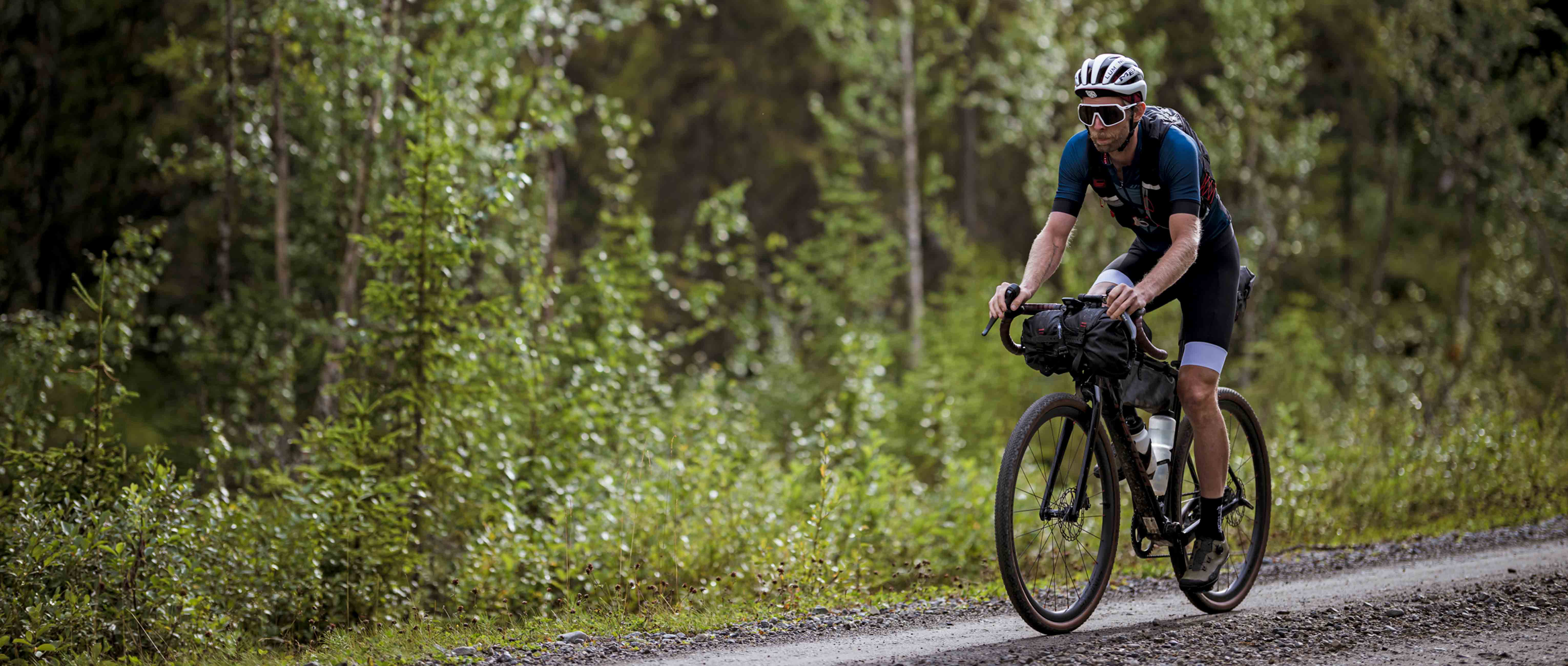
‘You know what, I wasn’t that bummed. Sure, when I stood on that windy beach on the Norwegian Arctic coast on May 15, getting the fastest known time was front of mind.’ This doesn’t surprise me - I know André as someone who has competed at the highest level for all his life. ‘But,’ he continues calmly ‘it didn’t take long until the most important thing became the experience itself. The more I rode, the more the simple adventure of the ride came first. Even when I knew I wasn’t going to make the record, I carried on. By that point, I just wanted to enjoy the rest of the ride and finish strong.’
It’s a pragmatic and interesting answer that I was not expecting. 29 days after setting off, André posted a video on his Instagram that screamed dejection, having realised that he wouldn’t achieve his initial target and was two days out from the current record. But upon reflection and with another watch of the video, his apparent disappointment was most likely just fatigue.
FKT on the EDT
Fastest Known Times, FKTs. Do you remember those lone competitions that were somewhat en vogue during the weird times of the pandemic? Many probably see them now as an overinflated Strava segment and rank them with the same level of vacuous importance. But to the ultra-cycling community, FKTs are legitimate achievements, markers of a rider’s prowess to cover massive distances faster than anyone else.
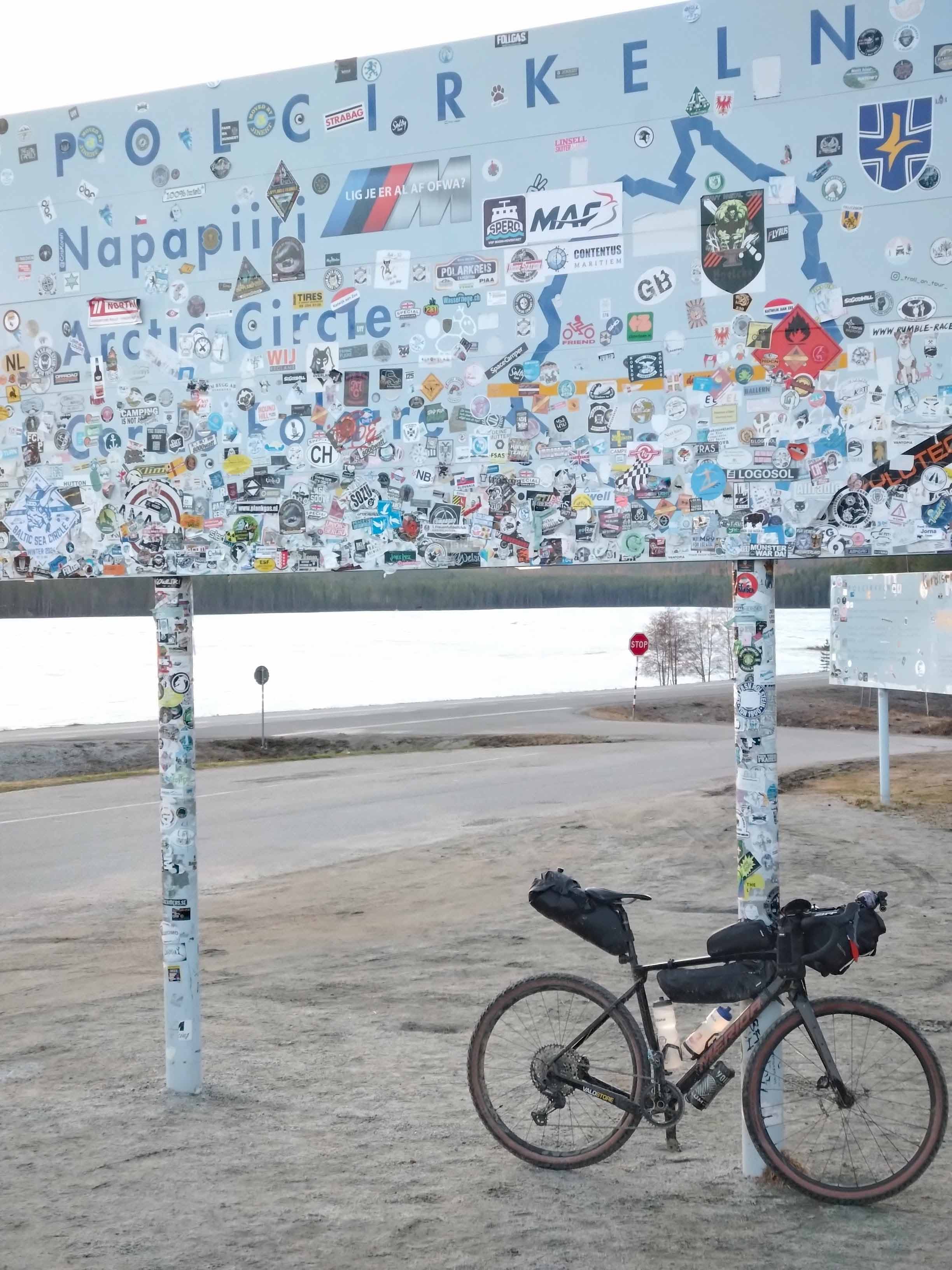
Image courtesy of André Jonsson
One route gaining recognition at the moment is the European Divide Trail, EDT. The route totals 7,601 km, going from the north of Norway to the southernmost point of Portugal. It includes 73,152m of climbing, goes through nine countries and was designed by Andy Cox, inspired by the Great Divide MTB route in the USA. But what is most significant is that the EDT is the longest predominately off-road cycling route in the world.
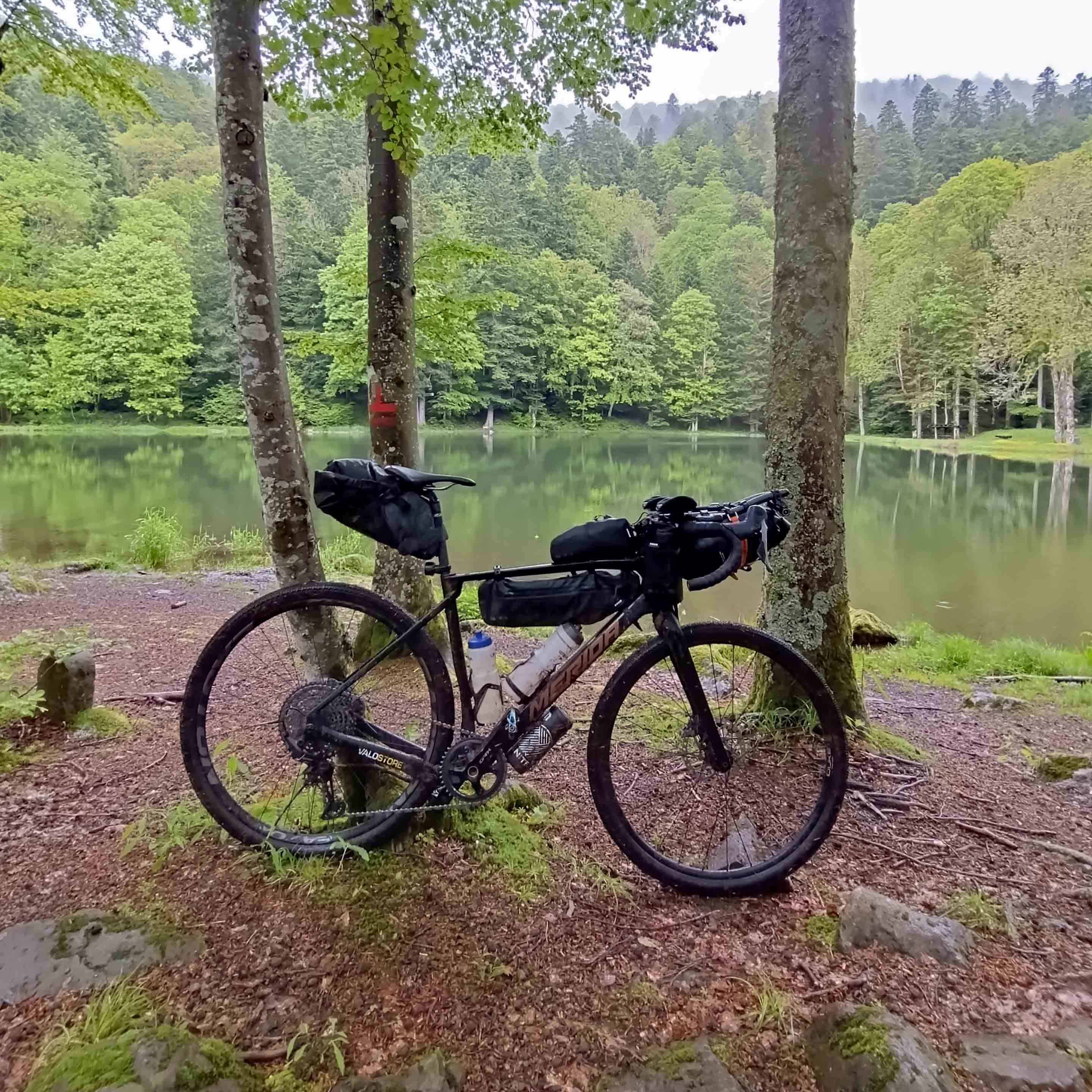
Image courtesy of André Jonsson
It was this route that international trail runner and ultra cyclist André Jonsson, from the mountains of Sweden, set out to get the FKT in May this year. Relatively unknown within the ultra-community, André had achieved good results at Bright Midnight and the Bohemian Border Bash, so had proven his ability. But it was a change in his work situation that inspired him to take on the huge challenge of an FKT on this tough route.
‘I originally saw the route a while back and thought that it was really cool. After my work contract ended, I figured now was the time. And knowing that I’m someone who likes to push myself hard, I calculated on doing it in one month. Financially, I didn’t want to be out for two months and I’d hoped to be able to recover in time for a full summer of running races.’
André is as modest as he is driven. Having grown up in the Swedish mountains, he excelled at cross-country skiing, represented Sweden in the soon-to-be-Olympic-sport of ski mountaineering and then took that love for technical terrain over to the world of skyrunning, where he finished 2nd at the World Championships in 2018. As with most runners, he moved from using two wheels as a form of training, especially during periods of injury, to a more focused form of sport and ultra gravel riding was next on this mountain man’s agenda.
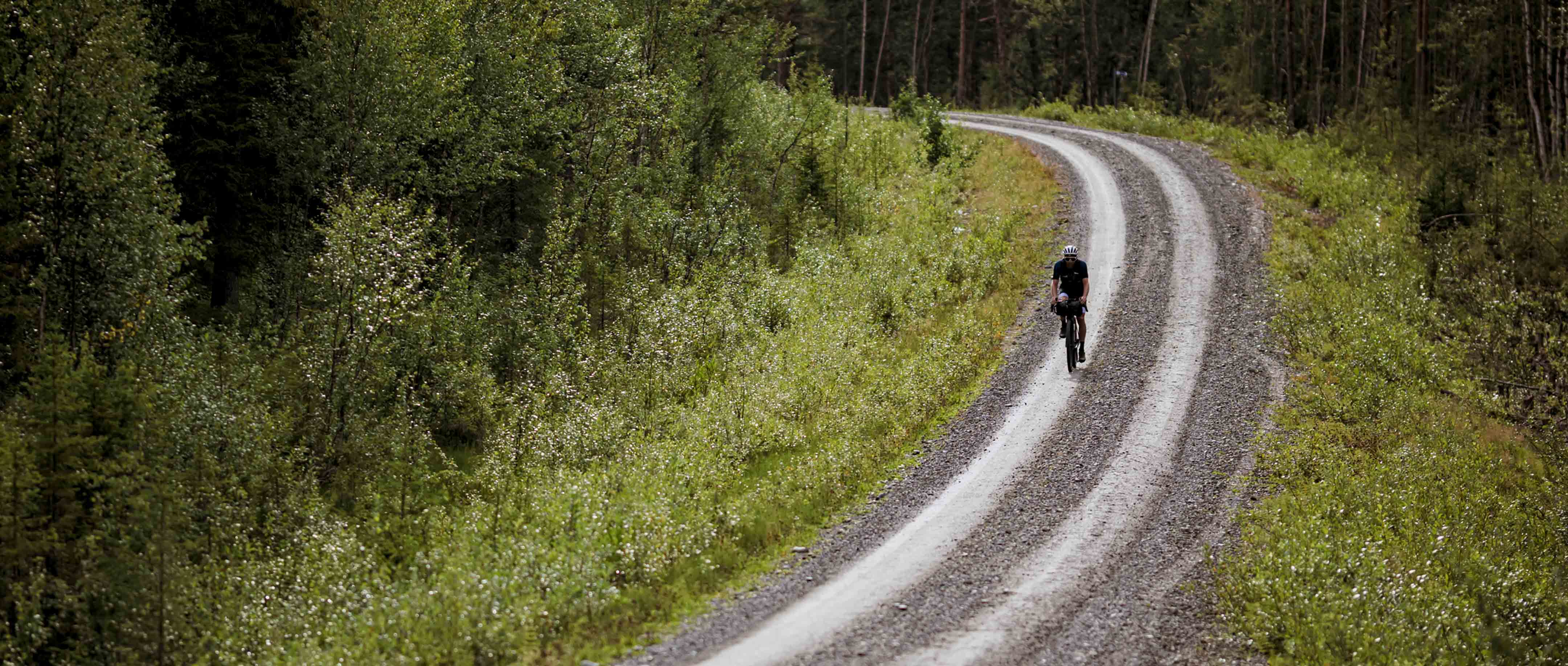
Long days in the Nordics
Spend any time reading up on the route of the EDT and you realise that it crosses two distinct types of gravel. The first portion being the dream ‘champagne’ variant that you only find in Norway, Finland and Sweden, followed by much rougher gravel that you encounter from Denmark and southwards.
As someone from the region, it was here that André set about creating a buffer for what was to come later. ‘It’s funny looking back. I can really tell the difference between the first third of the route and the later parts by the state of my brakes. When I was in the North, I could go a whole day pretty much without touching my brakes. I’d roll along at a good pace and could camp anywhere. Drink from all the streams. I lived on dry food because the distance between each re-supply point was so much greater,’ André explains.
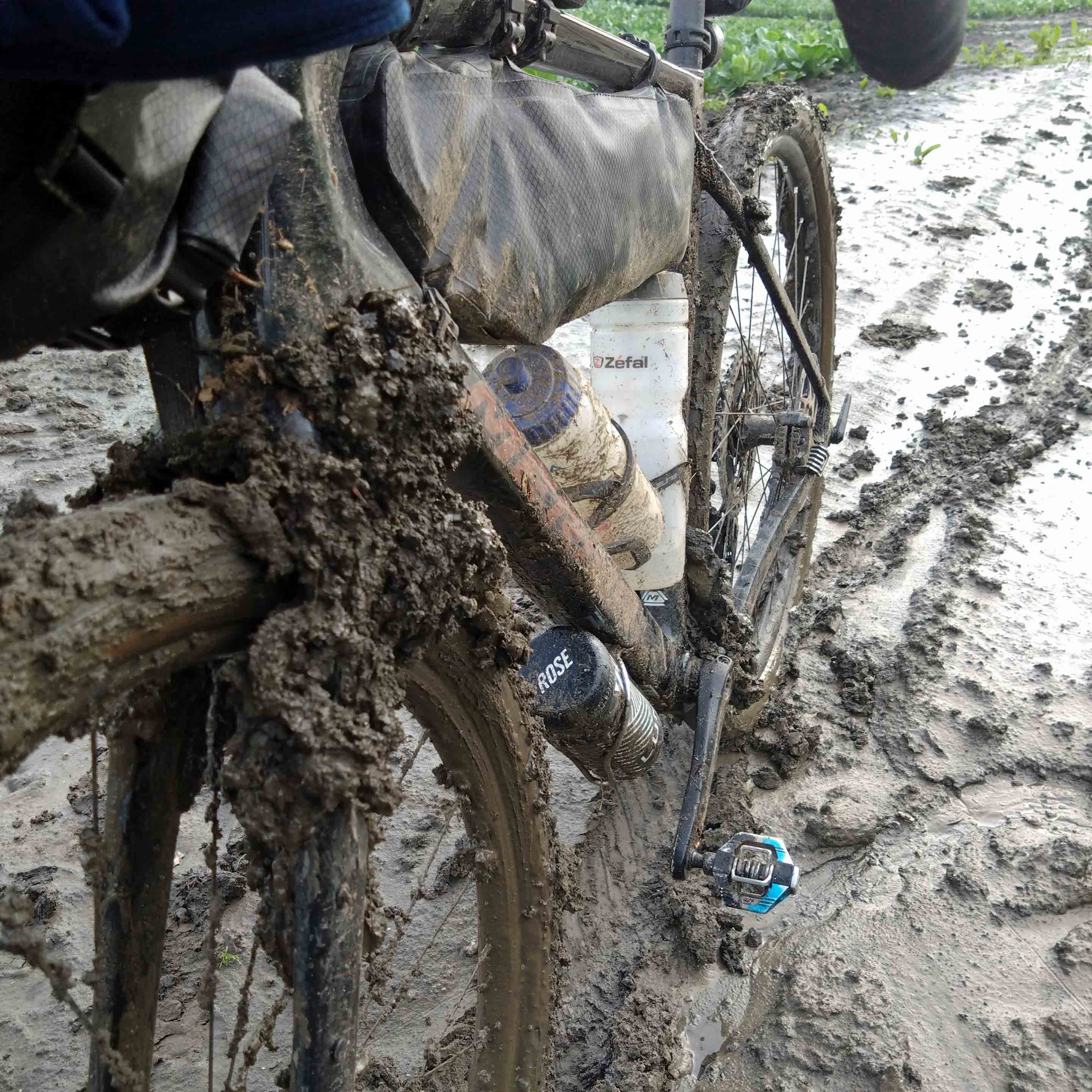
Image courtesy of André Jonsson
But it was not all easy rolling. Starting so early this far north can be somewhat of a lottery when it comes to the weather. André knew that he was risking it, but only had a tight time window to do his FKT attempt. This meant that even though he only had 30 minutes of rain on the first day (and stayed dry until Germany) the winter snow was still on the ground in places and all the recently snow-ploughed tracks were still very soft, which introduced him to the unseen challenges of the route.
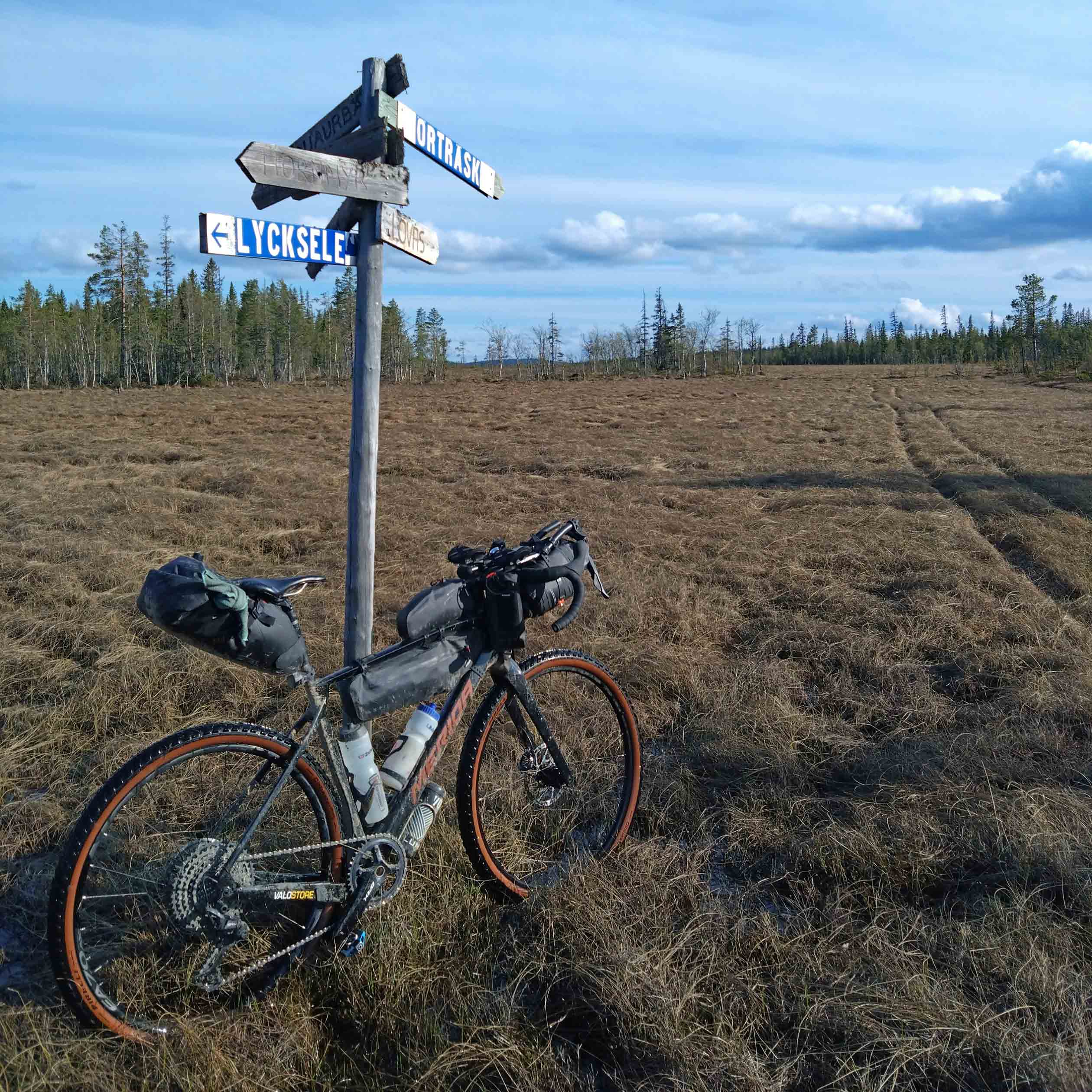
Image courtesy of André Jonsson
‘Pretty much all the first day was on asphalt, which I guess lulled me into a false sense of security. But I soon started to hit long sections on super soft gravel roads. Two tough bits were where the route followed a winter trail for a couple of kilometres, meaning a long hike-a-bike through a bog. The other was where the route went up to a TV mast near Arvidsjaur. It was only 100m of altitude gain, but it was an unrideable singletrack hike up, followed by a snow-covered ATV road down, again unrideable. I understand that the route can’t account for snow - that was my fault and if I’d started a week later it would have been better - but the area around Arvidsjaur is used by the Swedish military, so there are so many super wide, super hard gravel roads. I now question why the route would choose a winter trail or such a hiking trail,’ he questions aloud, still coming to terms with the reality of the route.
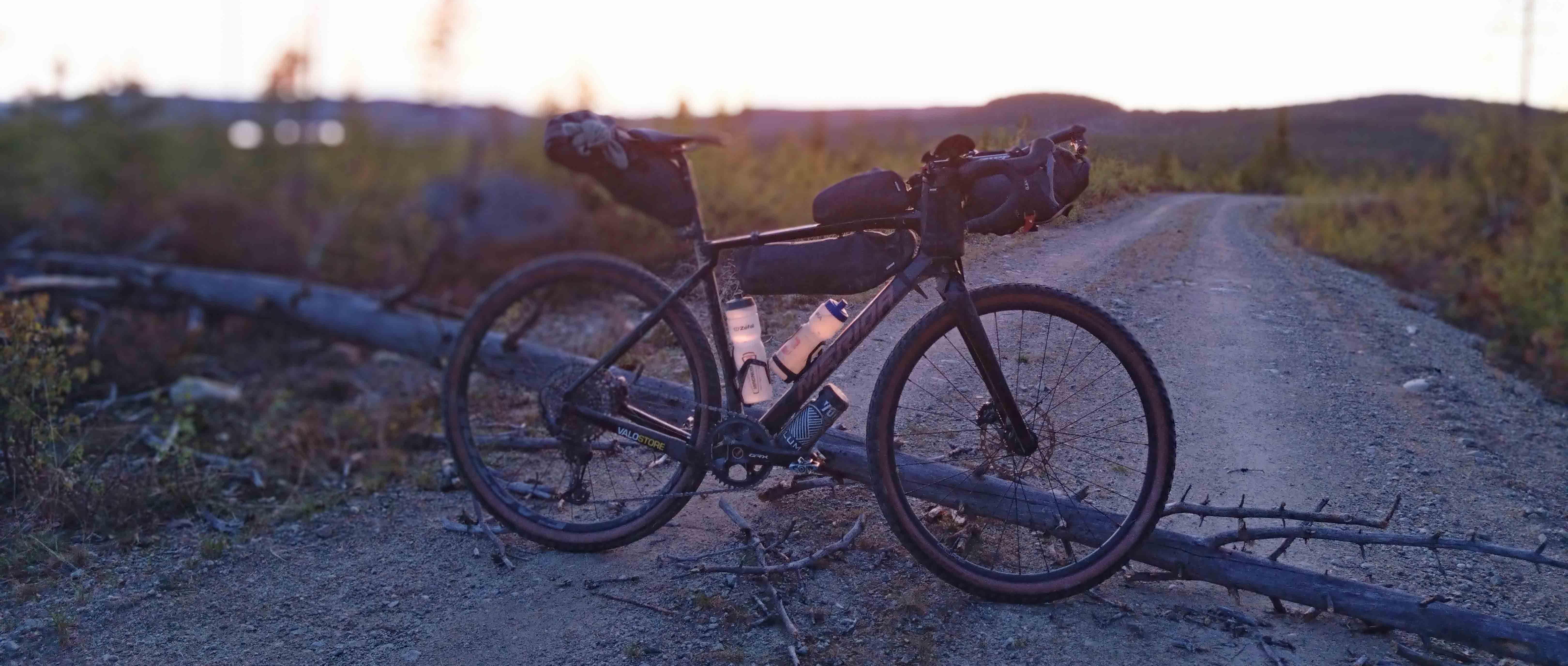
Image courtesy of André Jonsson
As André progressed south, the weather improved, the snow melted and he got into the flow. ‘When I was doing the planning, I broke down what the record holder, British rider Angus Young, had done each day. I figured that an average of 220 km per day would break the record. The plan was to hit close to 300 km per day in the north, so that I would have a buffer for later. I was hitting those numbers, so it gave me confidence, but I can say now I should have looked at the ride time that Angus did each day, then I would have got more of an idea of the days that were tough, where the trail didn’t allow fast riding. That would have prepared me more for the challenges further south.’
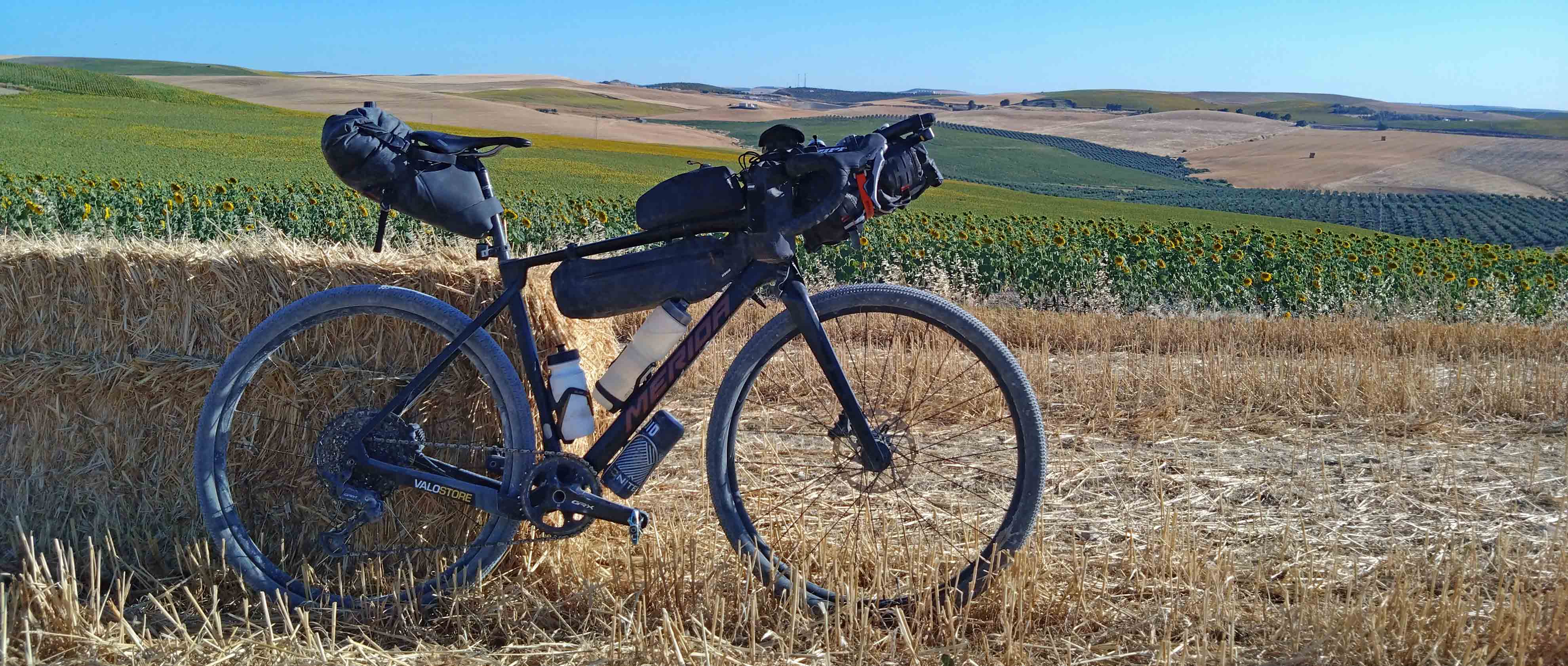
Image courtesy of André Jonsson
Struggling further south
Witnessing sunset through a forest left thin and blackened due to a fire in the middle of Sweden is an image that he’s unlikely to forget. That and the 140 km time trial to the ferry crossing from Gothenburg to Denmark due to a lazy morning in a hotel. He was now rolling south at speed, which is where the true grit of the ride began to kick in.
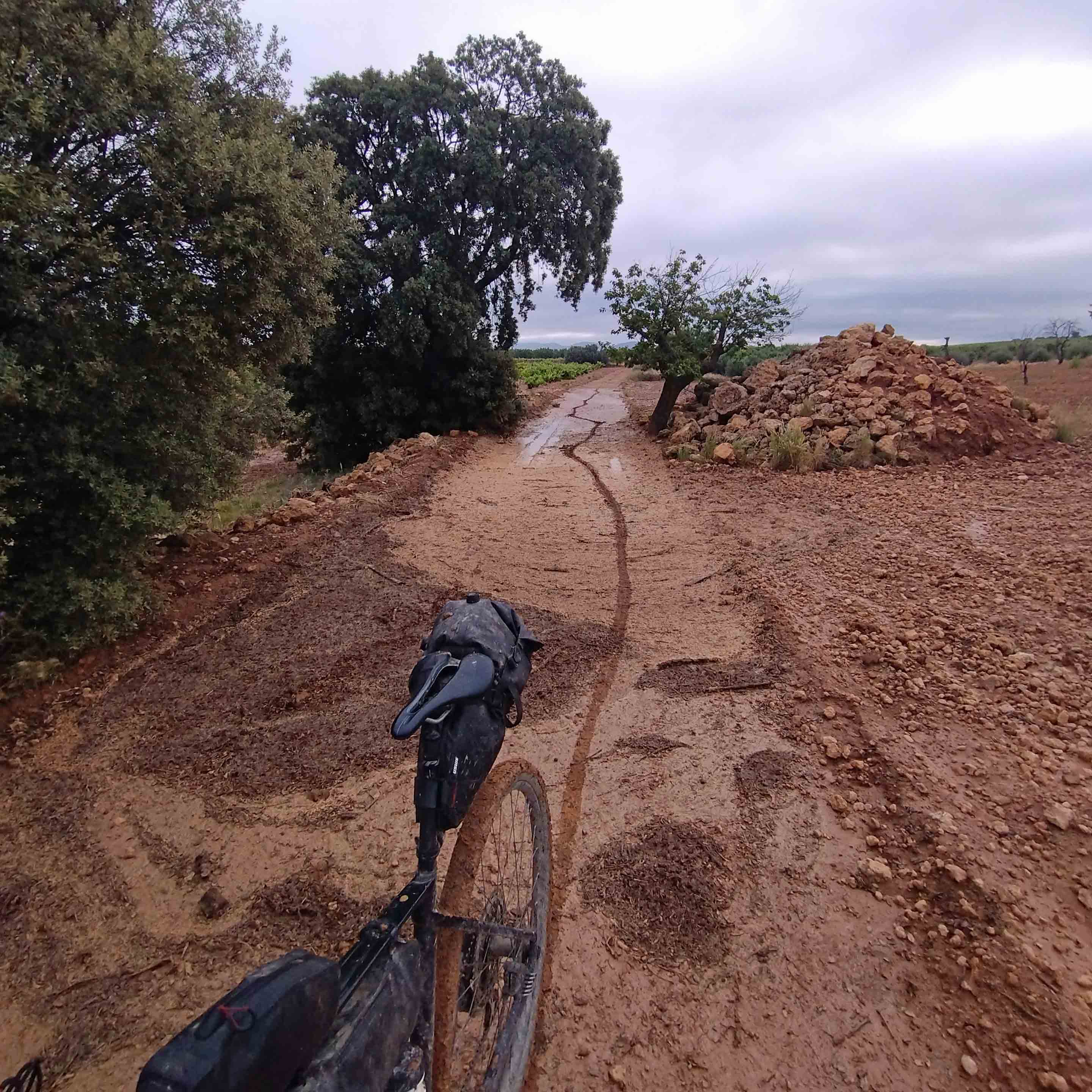
Image courtesy of André Jonsson
The gravel got chunkier, the towns more frequent and the trail network more abundant. It was here that André also hit one of the wettest late springs in memory. Even though he thought he would face the worst weather in the north, it was actually in Germany and France where wet tracks and peanut butter mud played havoc - not only his equipment but also on his daily distance average.
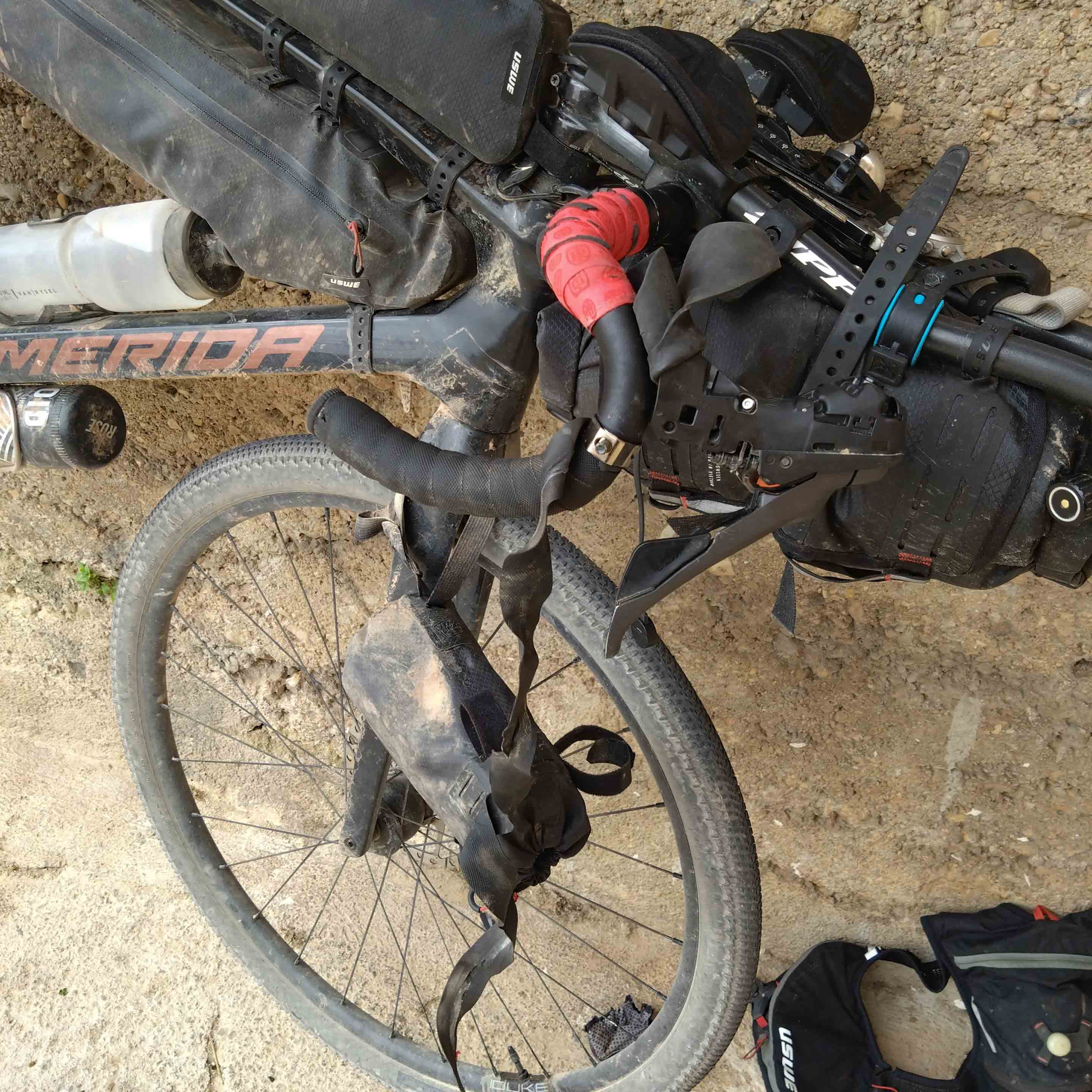
Image courtesy of André Jonsson
‘There were so many tough moments in the middle of the ride that I look back on the first third, ripping through the Nordics and think how easy it was. But I maintained a belief that I could still get the FKT against all adversity,’ André proclaims. ‘My biggest fear was having to drop out because of a physical problem. So being able to ‘MacGyver’ fix all the issues I had made me proud, as well as pushing through the hardest moments.’
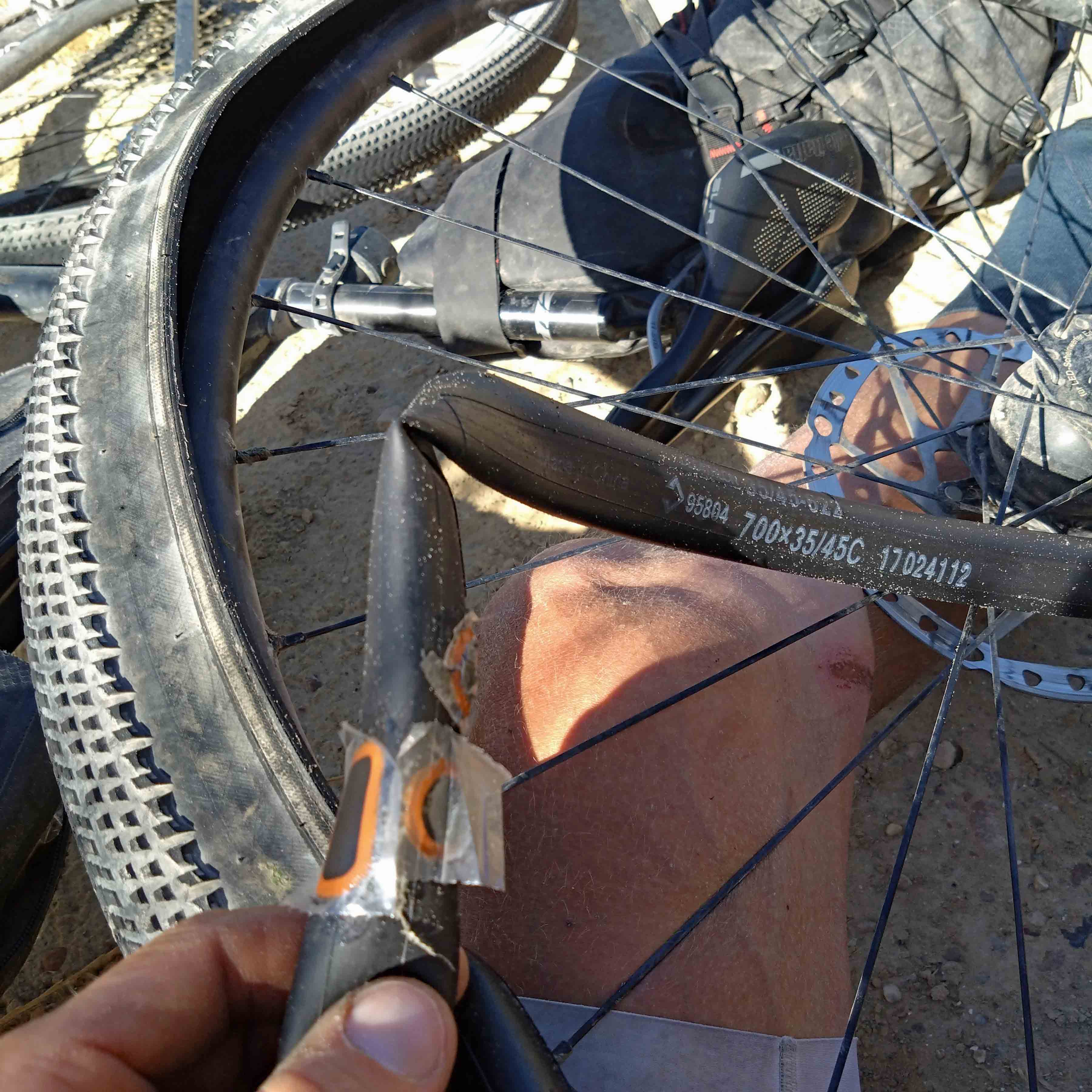
Image courtesy of André Jonsson
André recounts stories of punctures where dirty hands meant it was impossible to get everything clean, meaning it was only time until the next. Or the moment when a football pitch-sized bike shop in Germany didn’t have a single GRX-compatible chain even though they had all the city bikes you could imagine. (Luckily a nearby small car mechanic had all the high-end gear you could imagine, so an XTR chain was sourced.) Long sections of peanut butter mud churned up due to the rain and logging that was taking place in the area caused aggravation, but nothing topped the day when all the wet weather finally got to André’s electrical items, causing his Wahoo to burn up and fail, leaving him to navigate solely using his trusted running watch.
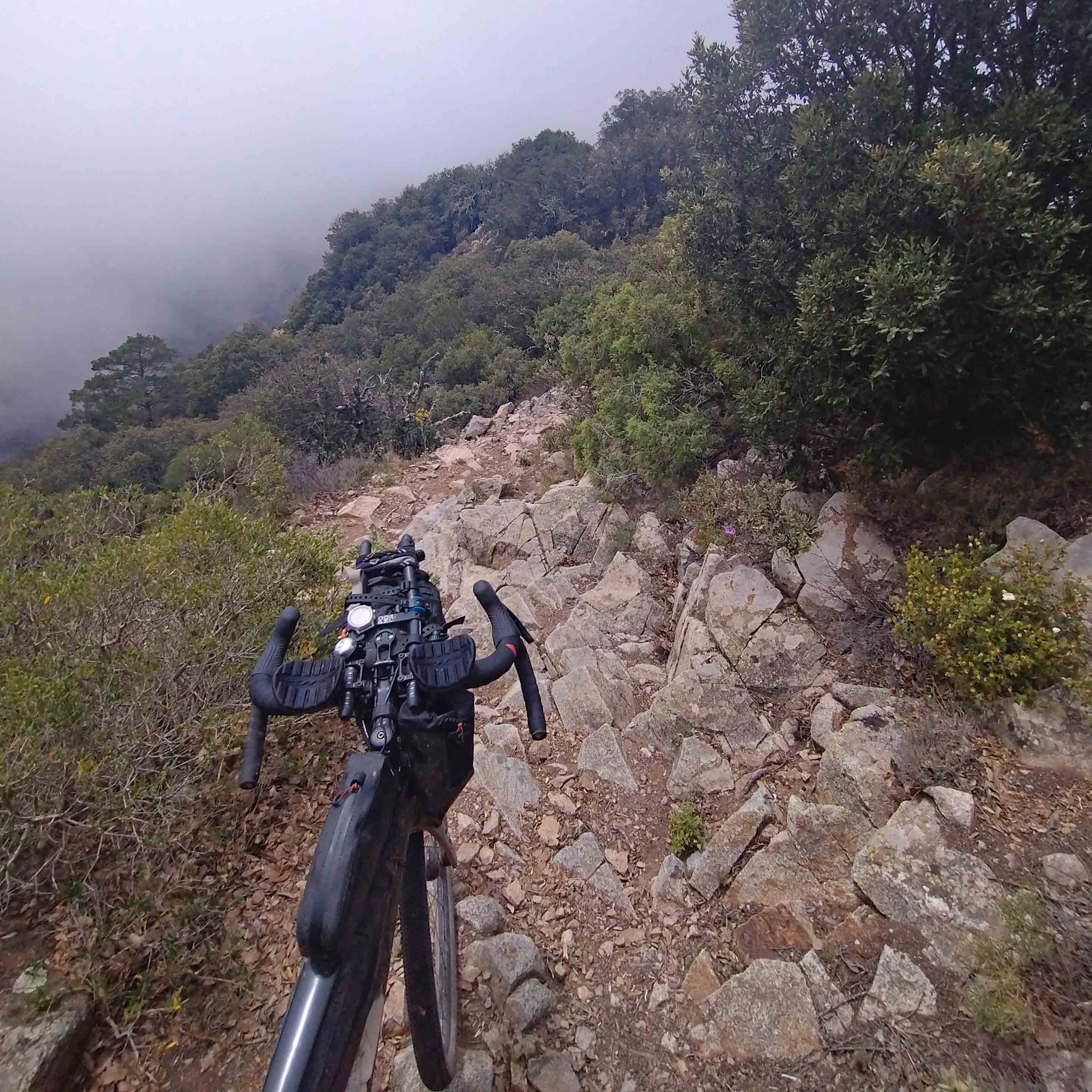
Image courtesy of André Jonsson
But as with all FKTs, the clock keeps running, so each of these off-bike moments where he was not moving and slow moments on the bike ate into his daily average, resulting in his record attempt dreams slipping away. ‘I kept telling myself that when the route was bad and there was mud or a huge hike-a-bike section that it couldn’t be this bad everywhere. But it turned out that the route was a lot more challenging than I originally thought. There’s a Facebook group about it and so many locals have called out sections, for example, one in Germany where a highway is being built and later in the course in Portugal and Spain where you go through private land. Seeing how everything is constantly evolving, it makes me feel that the route needs to become a community effort, where locals can contribute to improvements.’ In short, it is impossible for Andy Cox to be able to know 7,600 km of a route as well as a local rider would.
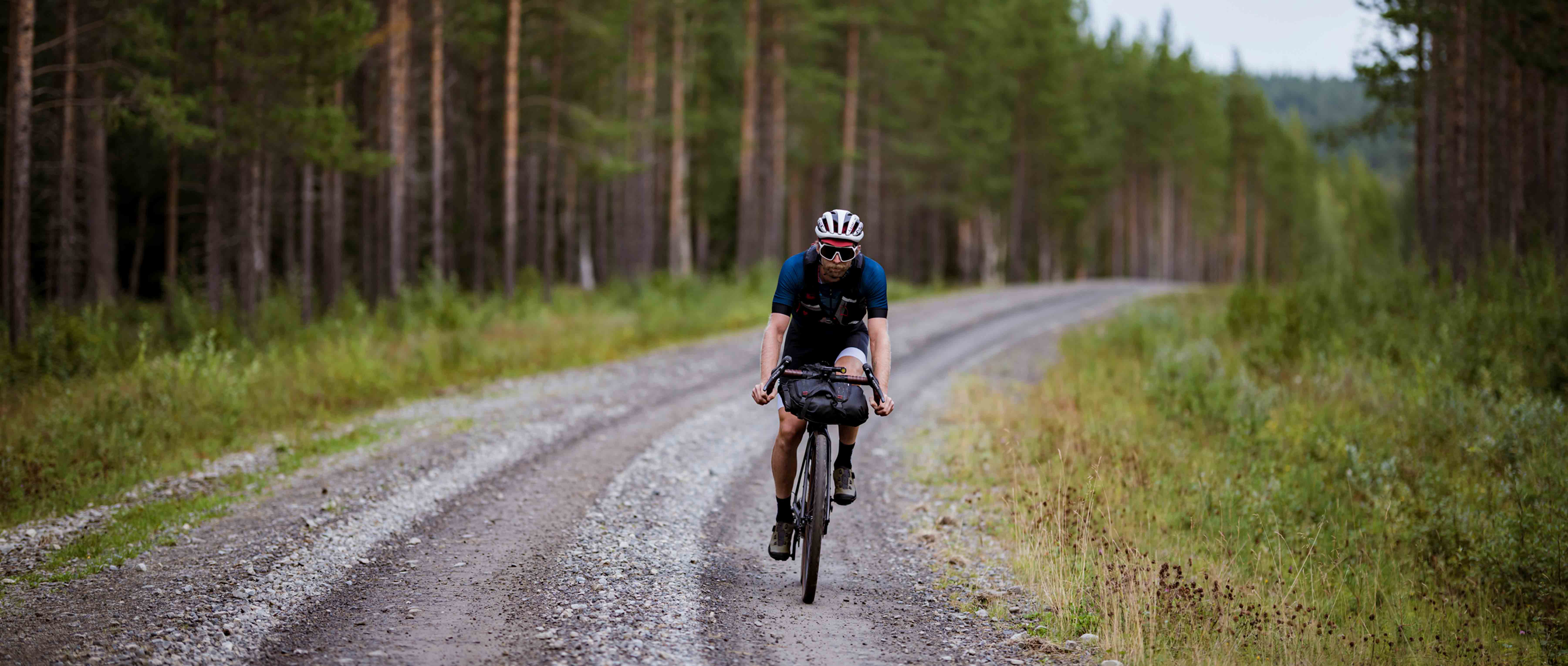
The final stretch and coinciding the FKT attempt
With the FKT still close, André had his ace card to play. Having ridden competitively at ultra-distance events, he decided to catch up by dropping sleep and limiting his stationary time. On day 27 he clicked into race mode, pushing through the night and grabbing just a couple of hours sleep. It was now or never.
‘Upon reflection, it was clear that there were many factors that caught up with me there. The evening after the big push, I was in a restaurant and, not speaking Spanish, I just ordered off the menu. I enjoyed a nice plate of fried prawns, but was low on carbs, so pushing hard, under fuelled, with the fatigue of the last weeks in me and cutting sleep all caught up with me. I made my target distance that day and took two hours of sleep, but when I woke up it took almost four hours to get out of bed. I was lost, completely out of it. That day was more peanut butter mud, and it destroyed me. I couldn’t ride. I was empty. It was certainly the lowest point and I knew that the record had gone.’ A realisation that in the moment was tough, but now, weeks afterwards and with distance from the fatigue and emotion, he seems at peace with it.
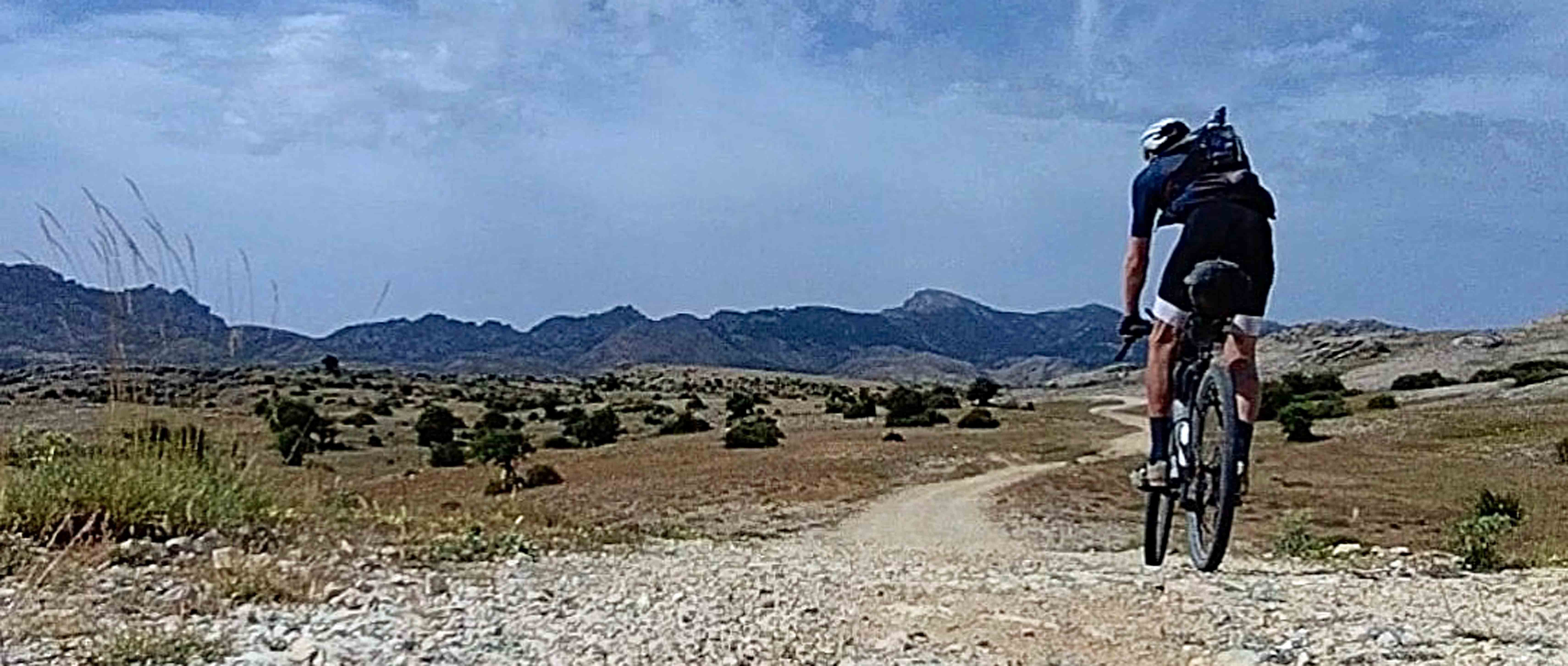
Image courtesy of André Jonsson
From that moment on, André focused on embracing the adventure side of the ride. Slowing down. Sleeping more. Not racing the clock and even choosing a nicer route to the finish that wouldn’t see him jumping fences onto private land to follow the way prescribed by Andy Cox.
Stories abound
What followed as we talked were more stories of the adventure. Moments when André was thinking of making a FUCK ANDY COX t-shirt to show his disdain for the route. When he slept in a shelter in Denmark only to be woken up by a bunch of drunk young locals on small mopeds doing a pub crawl. One was so drunk he slept in the same shelter with André. Waking up at the same time, they chatted as the Dane, still drunk, lit a cigarette, stumbled back onto his vintage moped and wobbled off home. André put on his helmet and continued.
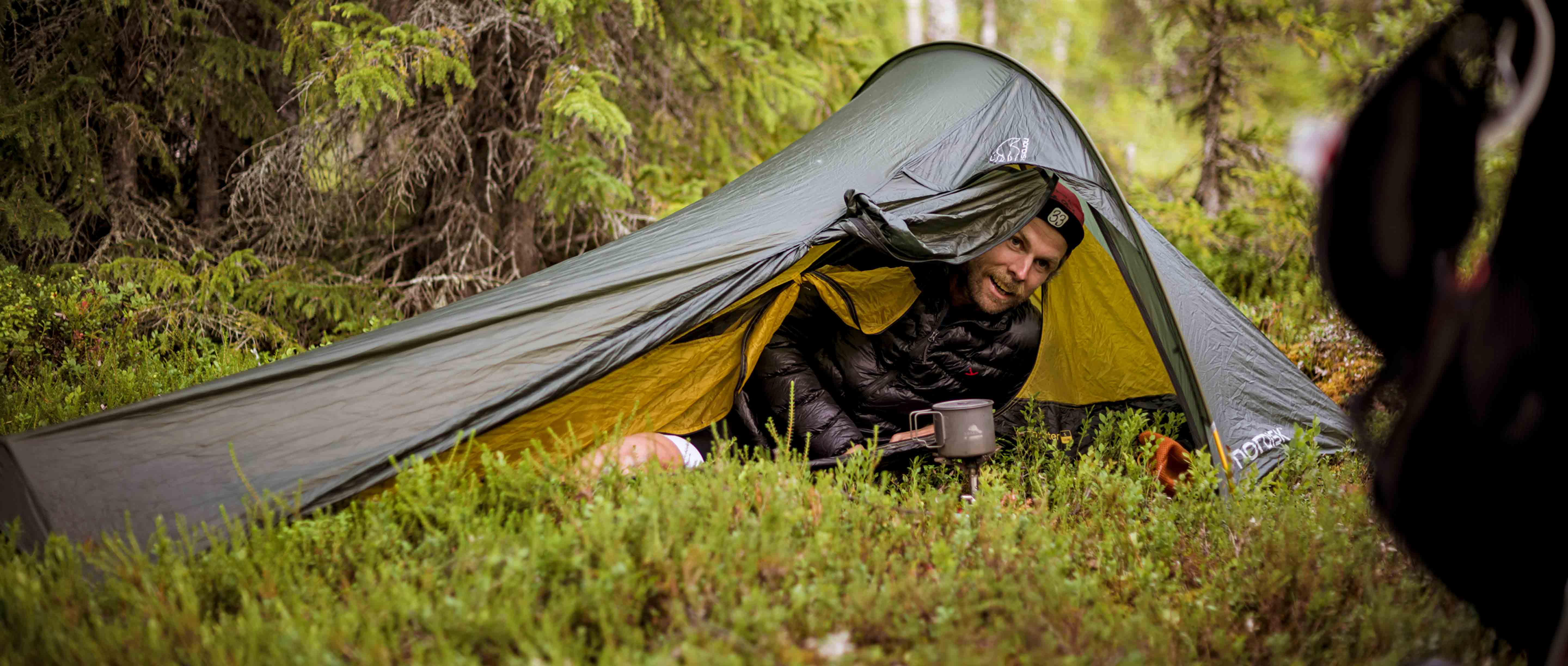
Or the story of the time that a snapped gear cable saw André asking a local guiding company for help. Not knowing their workshop and with their mechanic on vacation, the staff there told André to get a coffee. Ten minutes later one ran in with a new cable, which André proceeded to change using the balcony above as a makeshift workstand. A story about meeting a fellow cyclist on the ferry that crossed the border from Spain to Portugal, who had been riding for two months. They chatted about routes, set-ups and had mutual respect for each others’ journeys.
And finally, about the time in Germany, when André had set camp at a small football pitch and headed to the local KFC for dinner. Having collected his food, he rode home dreaming of the waffle and ice cream that he’d ordered for dessert. It wasn’t until he got to his camp that he realised that the hot waffle had melted a hole in the bag and had been lost en route. That, he tells me, was a seriously low moment.
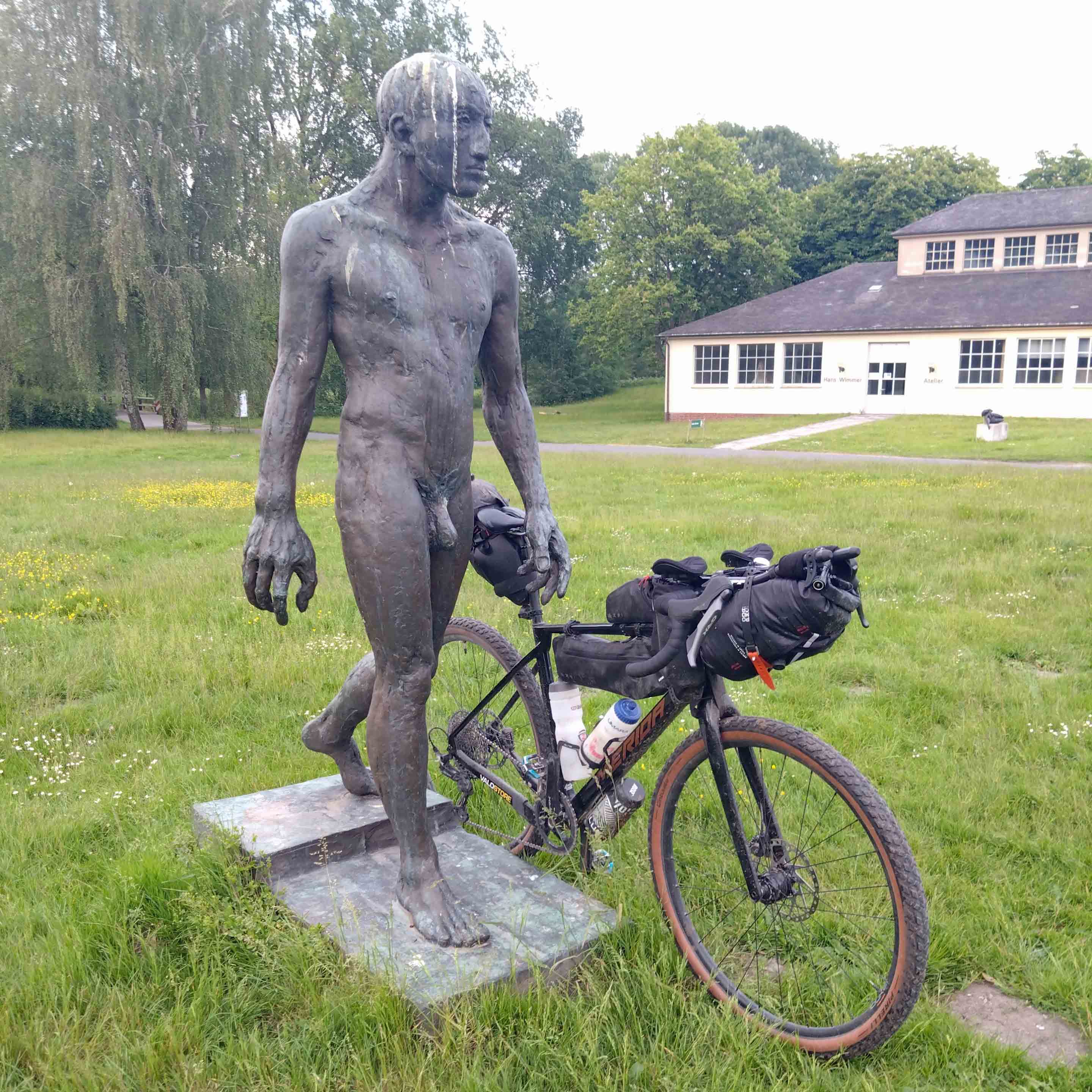
Image courtesy of André Jonsson
The overarching question of why and how it feels now
One thing that I wanted to know from André was why he decided to do the trip? Having seen the limited media pickup of what he had achieved, when compared to others doing FKTs and knowing that doing a record attempt on this route would never have the prestige of the same thing on more well-established routes, I pushed the question of why, what has he got out of it, especially someone so unlikely to shout about what he has done?
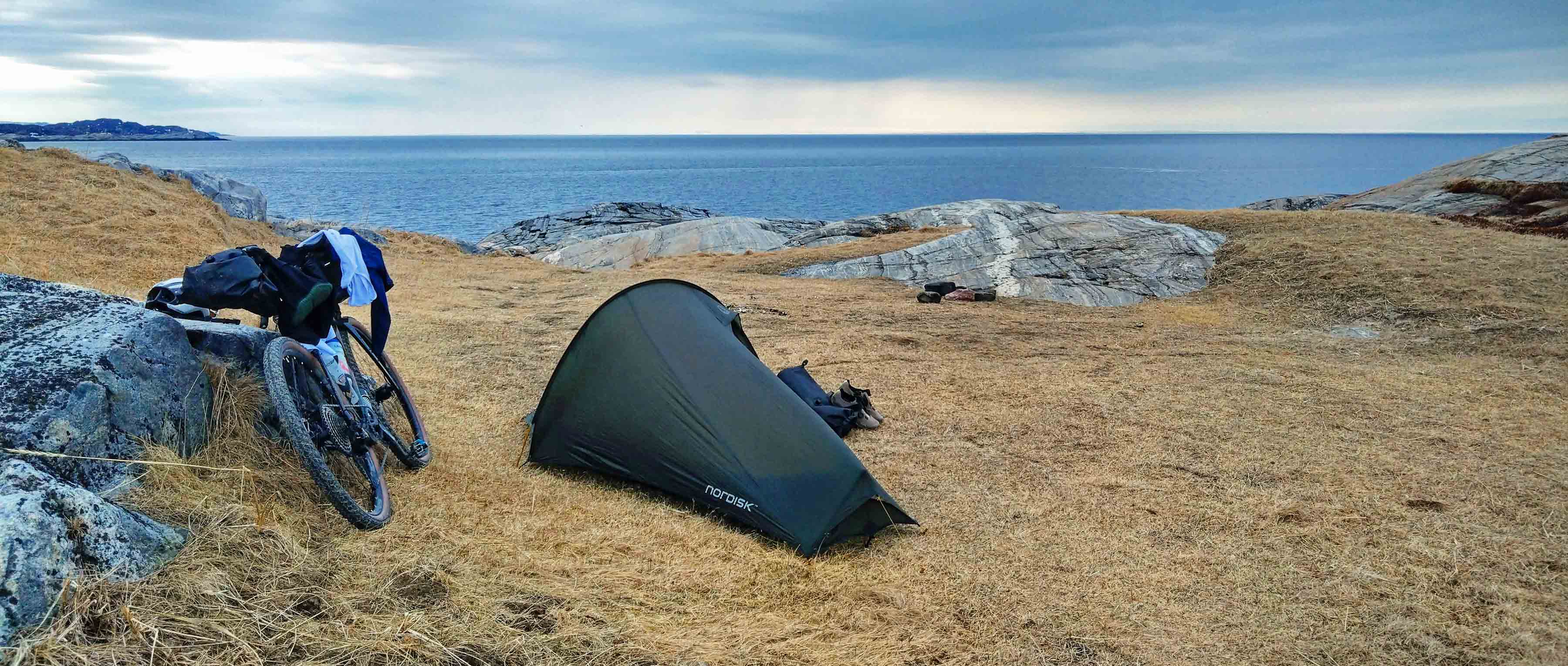
Image courtesy of André Jonsson
‘It’s weird, some of my partners have been really interested in the ride, such as Nordisk, but others less so. I got a call from a local radio station. They wanted an interview when I got back, but I never returned their call. To be honest, I just wanted to ride. Before I went, I was thinking about taking a camera or GoPro to document it, but it didn’t feel right. I was just like ‘Fuck it, I’ll just ride,’ not wanting to focus on content. But a good friend from the running world, Johan Lantz, said I should do daily videos where I wouldn’t have to stress over the caption and can just say what is going on. I did that and I think it worked well. I got a lot of support and heard that people liked it, but for me it was about the ride, about just being out every day, seeing what is around the next corner and experiencing the route.’
‘I think other people are more impressed than I am,’ André adds, in his typical humble mountain-born manner. ‘It just feels like a long ride, which was both amazing and miserable at times. At times I was daunted, but is that not what makes it an adventure, pushing it a bit?’
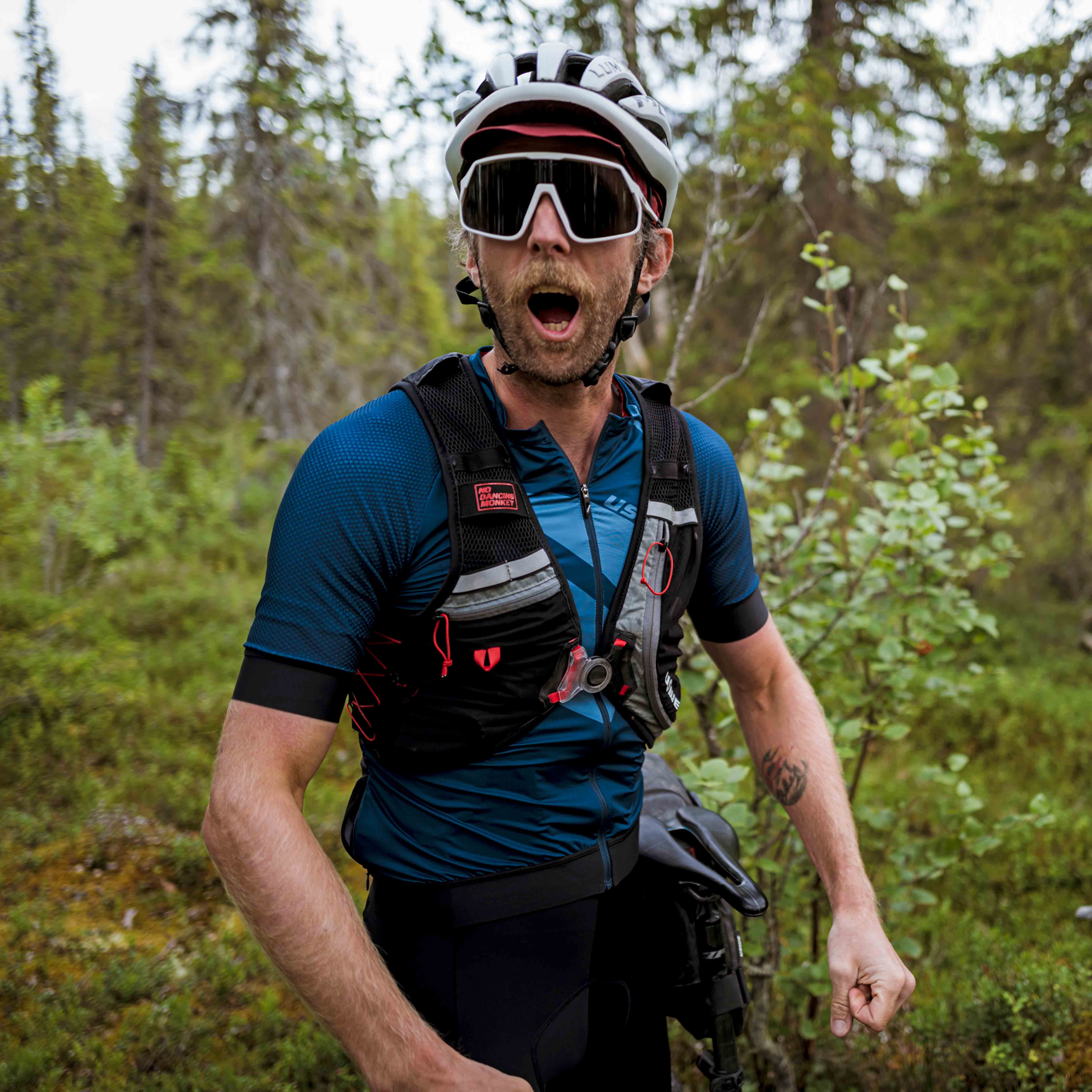
Current Situation
Some of you might have seen that 2024 Unbound XL 350 winner, German, Seb Breuer recently finished his take of a route inspired by the European Divide Trail. Originally setting out to break the record on the actual route, but soon scrapping that plan, Breuer’s documentation of his ride was the polar opposite of André’s. Pumping out daily videos, thanks to his following media team, the ride has a GCN vibe to it, with tips tricks, takeaways and all the ‘click baitery’ that is YouTube in 2024.

If that is your thing, fine, but call me a traditionalist when I feel that André should get recognition for sticking to the principles of FKTs - going minimal, without a support car or media team, so you feel like you’re actually on the ride with him, rather than watching an ultra long cut of Duel (a 1970’s horror movie where an ominous truck chases down the lead character), but the truck is changed for a car designed at the whim of a petrochemical billionaire renowned for greenwashing. I’m sure we’d all be more motivated to ride faster with a mobile cheer squad and a very ugly 4x4 following us.
Don’t get me wrong, each has its place, but I, for sure, salute the low-budget, FKT-compliant version done by André, because after all, is it not about adventure rather than the likes, reach and engagement?
European Divide Trail, finisher #32, André Jonsson, take a bow.
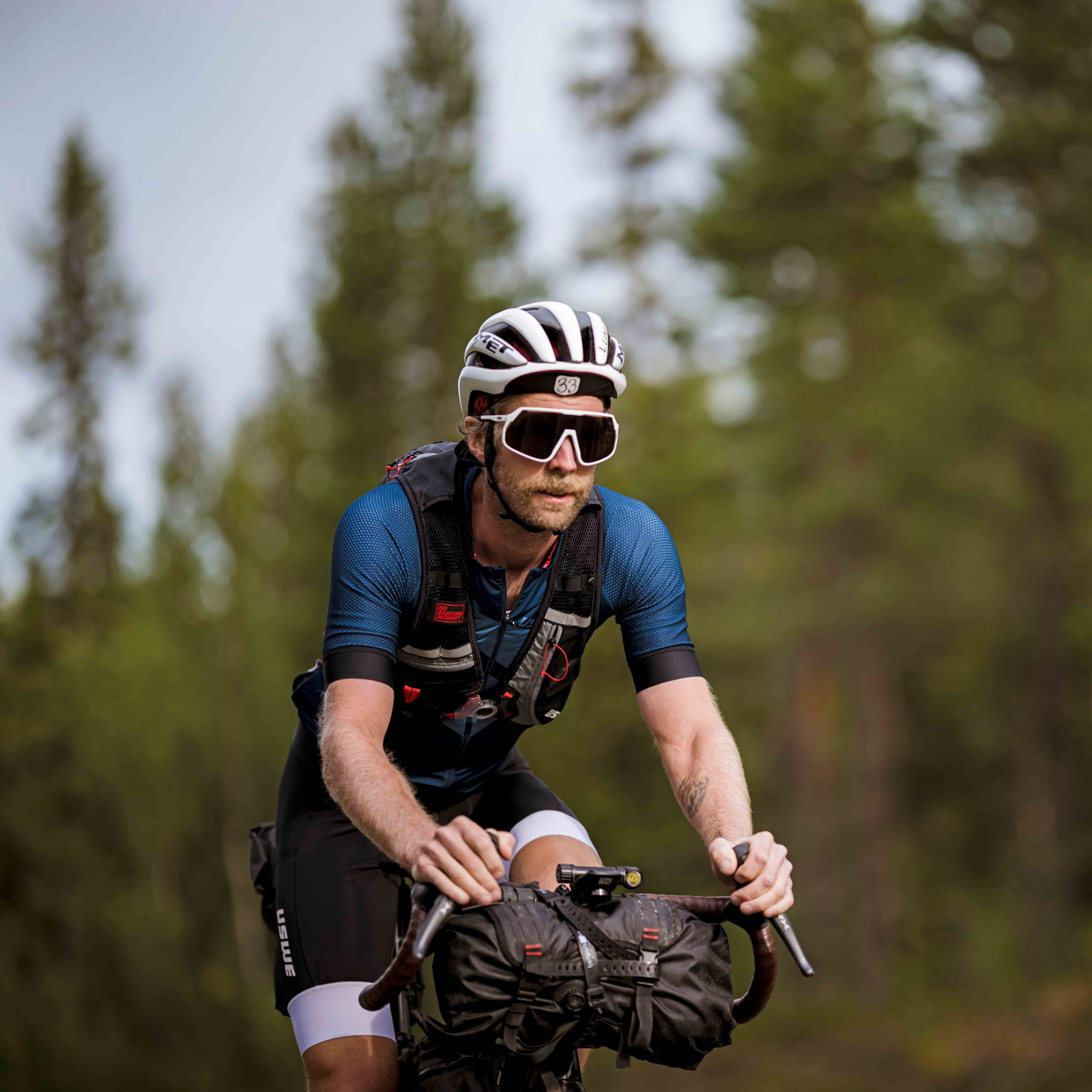
Takeaways
Breakages/replacements:
- 1 x chain
- 1 x lost spork on the first day
- 5 x spoons, stolen from coffee shops along the route, lost at various camps along the way - why is it that you always forget your spoon?
- 1 x burnt out Wahoo
- 3 x tubeless setups
- Countless flats
- 4 x front disc pads
- 1 x shifter cable
- 1 x lost pump and final snus (which was way more tough)
- 2 x tyres, unfortunately having to go narrower for the second part of the route, which is the opposite of what you need
- 1 x full cycling kit. Left at the final apartment to avoid the risk of people thinking he was smuggling chemical weapons whilst he flew back to Sweden
Bike choice looking back
André rode a Merida Silex 7000, with Shimano mechanical 12-speed GRX, on 50 mm Pirelli gravel tyres for the first part and sizing down to 40 mm for the second. Bags were from USWE, whilst the camping setup was the Nordisk 1 kilo camp.
With hindsight, André feels that a hardtail MTB with drop handlebars and front suspension would have been the best set-up. Ideally, he would have wanted narrow tyres for the north and wider for the south. But he did add that, at times, a folding bike would have been best because he could have packed it up and ran the long hike-a-bike sections!
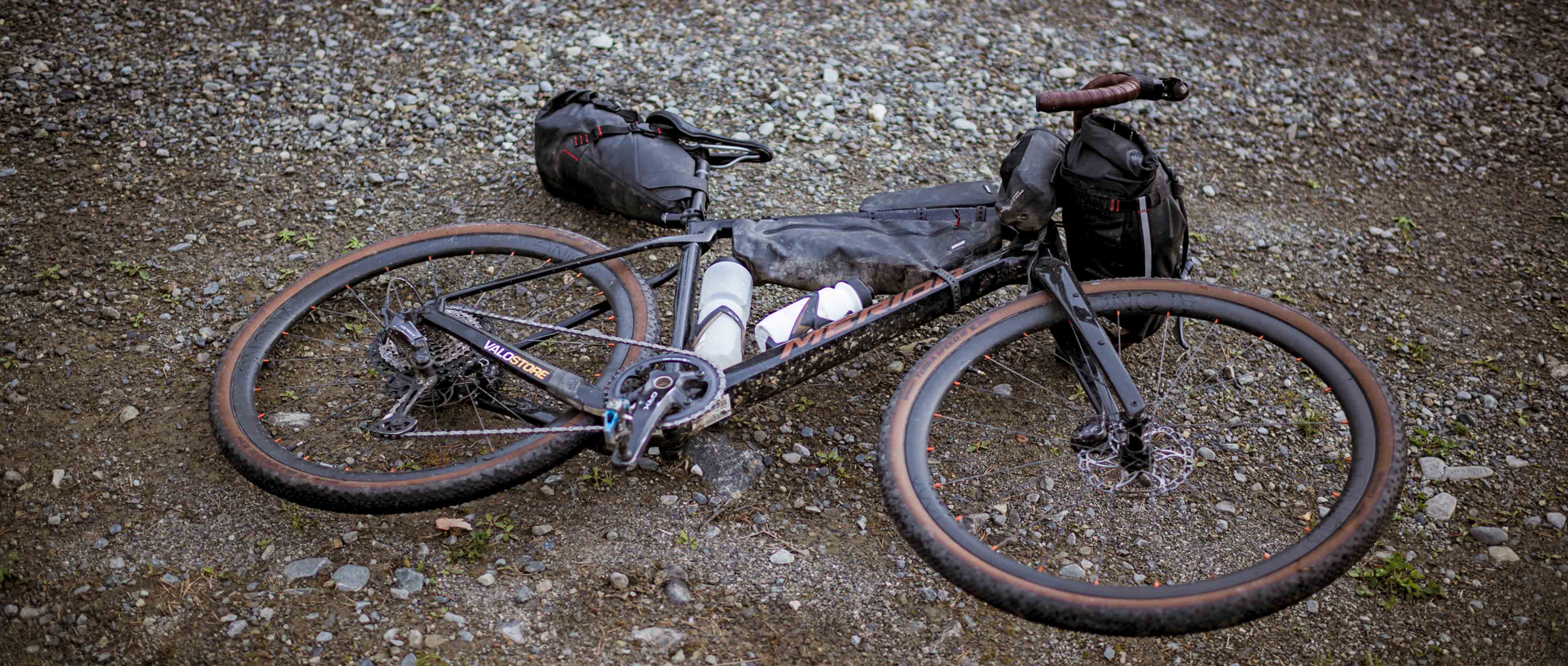
His total set-up probably weighed around 18 kilos, which is impressive, but again in hindsight, a second pair of riding shorts would have been nice, because putting on wet shorts every morning was not fun.
A question of community
With constant feedback on the stupidity of parts of the trail, the bogs up north (ed: you don’t use winter trails in the summer because they tend to be very wet and muddy when not frozen) mixed with numerous overgrown unrideable sections due to changes in nature, he feels that rather than this route being owned by one person, it should be a community affair where the route gets adapted. Not to make it easier, but just to make it more reasonable. 7,600 km is a long way, so investing local knowledge into key sections would make the ride just that little bit less of a challenge and better for those who want to ride more.
Text and imagery by Phil Gale, except where credited.